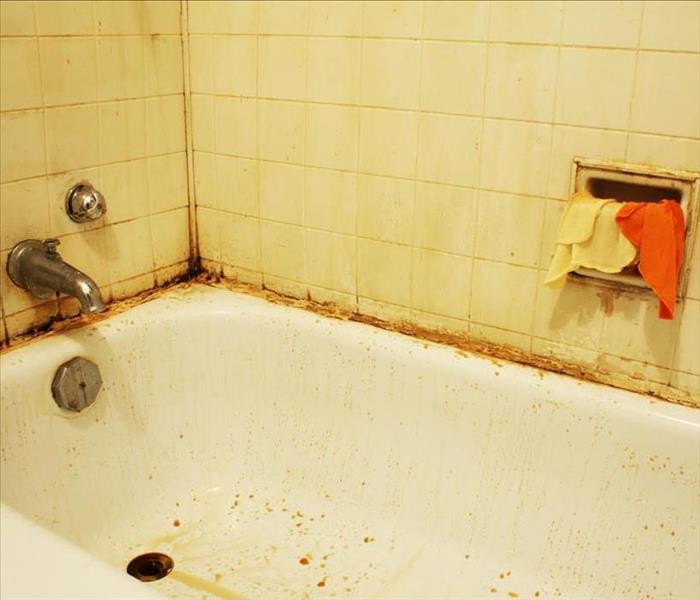Sewage Has Backed Up Into My Bathtub! Now What?
8/18/2023 (Permalink)
No one expects a sewer backup, much less to encounter raw sewage backing up into their Colorado Springs, CO, bathtub. Unfortunately, it is a possibility that some homeowners must face at some point. It's essential to get the problem solved as soon as possible to avoid the various hazards resulting from sewage going where it shouldn't.
7 Steps for Dealing With a Bathtub Backup
The key to appropriately dealing with a sewage backup is to clean the area thoroughly while preventing cross-contamination into unaffected areas. There are several basic steps for accomplishing these goals safely.
1. Keep Everyone Out of the Affected Area
First, it's critical to keep everyone not working in the affected area out until it's safe, especially children and pets. Raw sewage needs to be handled with care to not spread the bacteria even more than it has already dispersed.
2. Turn Off the Electricity
If there is a chance that the standing water has come into contact with electrical outlets or plugged-in electronics, shutting off the electricity before entering the area is vital. An electric current could be traveling through the water, so if you can safely reach the breaker box, turn off the electricity to the affected area or the whole house.
3. Protect Yourself With Personal Protective Equipment
When dealing with raw sewage, anyone working in the area needs to protect themselves as much as possible. Sewage carries germs, bacteria and diseases that can be hazardous if people encounter them unprotected. Therefore, you must put on PPE before entering the affected area. Then, you must remove the PPE every time you exit the area to prevent cross-contamination to other parts of your home.
Depending on the severity of the sewer backup, you may choose to wear only a few PPE items such as protective glasses, a respirator and latex gloves. You could also wear hair coverings, coveralls and shoe coverings for more protection.
4. Extract All Water
Removing the standing water could be relatively quick and straightforward if you have a wet/dry vacuum; it can also remove small debris. If not, a mop and towels may have to suffice. Hiring water damage restoration specialists is typically the best solution because these workers have the expertise and industrial-grade equipment to ensure a quality, thorough job.
5. Dispose of Unsalvageable Materials
Anything porous item that has soaked up the water probably will be unsalvageable, as you may not be able to clean and dry it thoroughly. You must throw out these materials, which could include things like wood flooring, carpet, wooden furniture, wooden cabinets and drywall.
6. Clean and Sanitize Everything That Remains
Cleaning and sanitizing the entire affected area and its contents is one of the most critical parts of the job after sewage flooding. You can purchase products in stores or simply make a bleach/water solution. Everything must be wiped down with this mixture.
7. Dry Everything Completely
To avoid more water damage and mold growth, you will need to quickly and completely dry all that remains. You can turn on the ventilation fan in the bathroom, open windows and doors, and run dehumidifiers, heaters and fans.
It's always beneficial to be proactive when it comes to home issues. If you discover a sewer backup, remember to perform these basic steps to mitigate the damage.




 24/7 Emergency Service
24/7 Emergency Service
